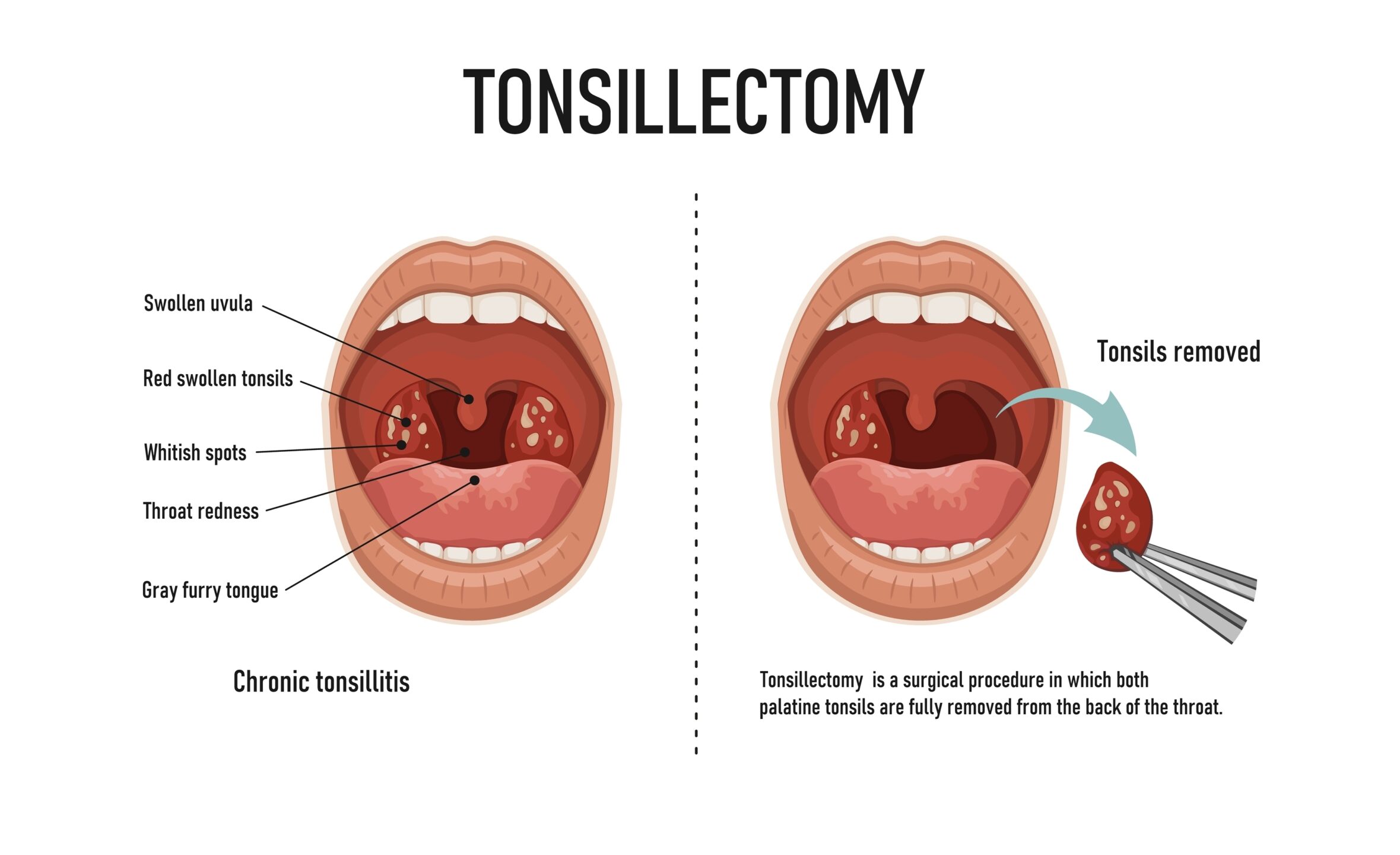Definition:
Tonsillectomy is a surgical procedure aimed at removing the tonsils, which are two small glands located at the back of the throat. This procedure is typically performed to treat recurrent or chronic tonsillitis (inflammation of the tonsils) or other conditions affecting the tonsils that do not respond to conservative treatments.
Purpose:
The primary goals of tonsillectomy are to:
- Reduce the frequency and severity of throat infections, such as tonsillitis.
- Alleviate symptoms such as sore throat, difficulty swallowing, and fever associated with chronic tonsil inflammation.
- Address obstructive sleep-disordered breathing caused by enlarged tonsils, such as sleep apnea.
- Improve overall quality of life for individuals suffering from recurrent tonsil-related issues.

